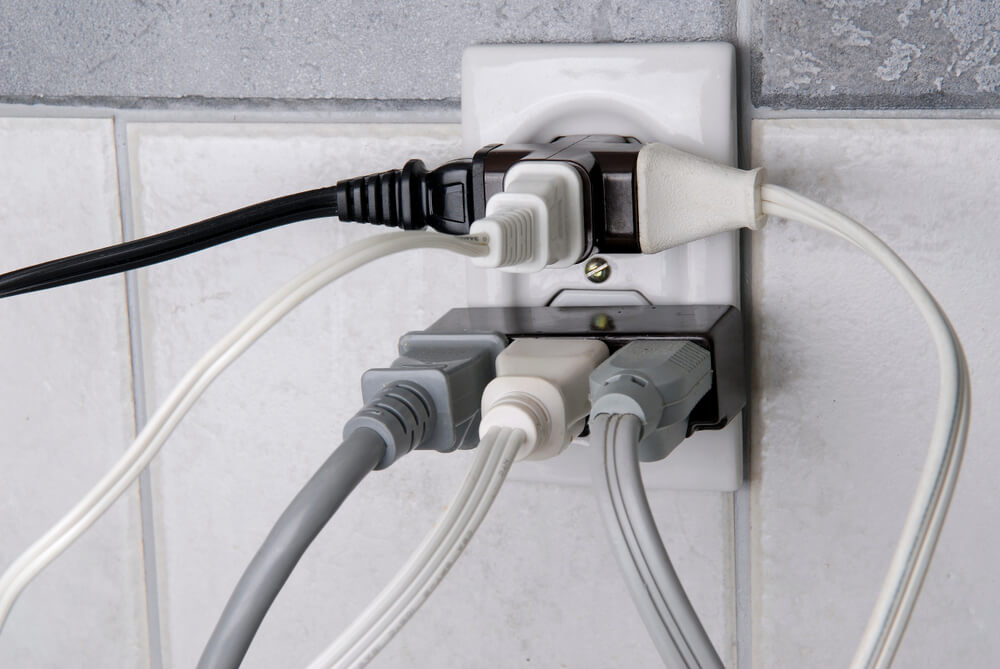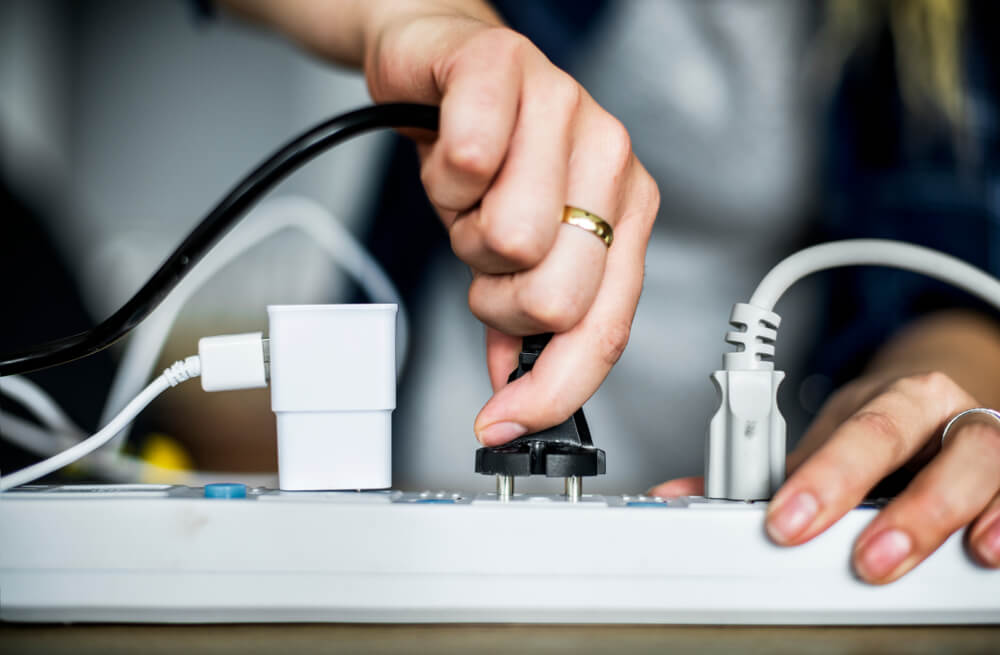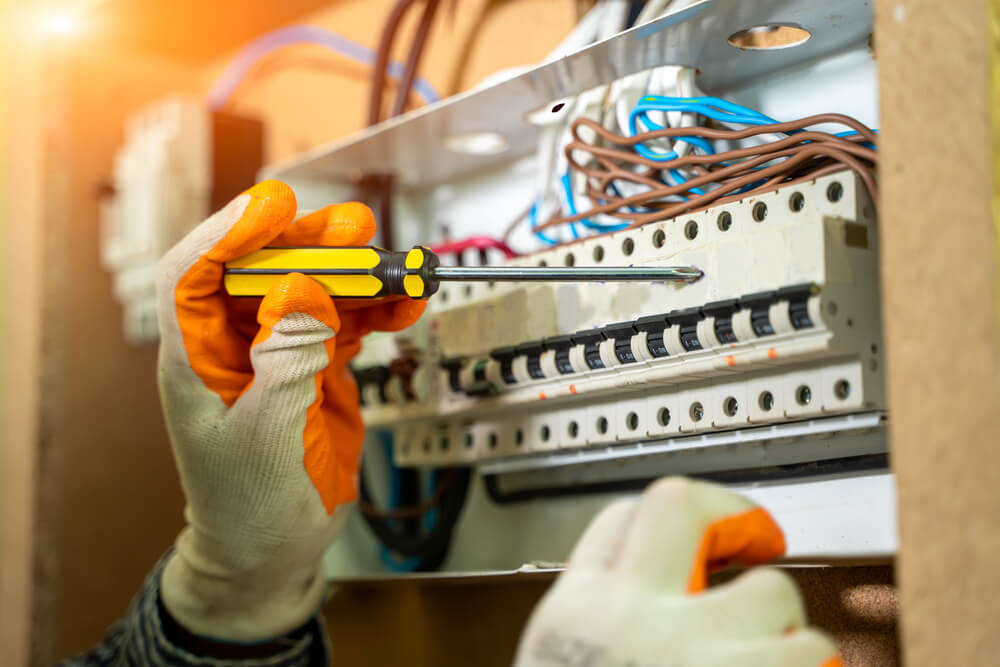
We live in a time where there are numerous electronic devices available to us which allow us to multitask in our busy lives. However, using too many appliances at once can overload your power outlet, making a risky electrical fault more likely.
All power outlets are designed to withstand a specific level of electricity – known as the ‘load rating’. Standard household power outlets can usually withstand 10 or 15 amps depending on their rating.
Power outlets often have more than one electrical device connected to them, with each adding electrical load to the circuit. When too many devices are connected to the power outlet which exceeds the recommended load rating, the outlet can become overloaded. This can easily occur in our homes in which many devices are being used simultaneously.
To put it simply, too much combined electrical current from multiple devices can cause a power outlet overload. For example, say you were watching TV while vacuuming the living room. You have lights turned on, and you decide to plug in your heater as well. This combination of multiple electrical devices being used at once may very well exceed the total load rating for the outlet in your living room.

Warning signs that your power outlet may be overloaded include; flickering and/or dim lights, warm power outlet plates, appliances and plugs sparking, a burning odour coming from wall switches or a mild shock or tingle from handling appliances and switches.
When a circuit is completely overloaded, this will cause the power to shut off. Older systems will have a fuse that will blow, and in newer systems, the circuit breaker will trip.
So how do we avoid this happening in the first place?
It’s good practice to have a good general knowledge of the circuits in your household, and to get an idea of which devices use which circuit. In order to gather this information, it is handy to have a circuit map of your home, to see which circuits power particular power outlets.
Often, the breakers in your home’s main panel (breaker box) will be labelled and/or numbered according to which circuits they power. If not, you can complete this labelling process yourself. This involves heading to your home’s main panel (breaker box) and methodically flipping off breakers one at a time. Each time you do this, test devices in your house which you use frequently, ie. light switches, your toaster, kettle, microwave etc. This can give you an idea of which devices are connected to the same circuit. Usually, this is a two-person job, with one person flipping off breakers and the other testing appliances.
Once you have an idea of which devices are connected to the same circuit, you can check if their combined wattage exceeds the circuit load. Larger appliances such as washing machines, air conditioners, refrigerators and dishwashers usually have their own electrical panels within the breaker box as they consume the most electricity. Proper labelling and circuit mapping can help you out in avoiding circuit overloads and allows our Perth electricians to easier locate potential electrical problem sources.

Extension cords can be handy, especially for powering a device in an area where there isn’t a power outlet nearby. They are often used frequently in older homes, where there may only be one or two power points per room. However, extension cords allow for more devices to be plugged into the power outlet, especially when used in conjunction with power strips. This runs the risk of circuit overload. Ideally use extension cords in isolation, to power a single device at a time.
It is a good practice to avoid having too many devices on at the same time. Some appliances are more power-hungry than others – your kettle, blender, and toaster in your kitchen, and your hairdryer, electric shaver and curling wand in your bathroom just to name a handful. There is usually no need to run a combination of these at once, so avoid doing so to prevent overloading your circuit.
There are some fantastic ways to reduce the energy use in your home, including swapping out your old light bulbs to LED bulbs, opting for appliances with good energy ratings, and purchasing smart power strips with inbuilt circuit breakers.

There will be times where you will be using multiple appliances at once – say you enjoy working on projects in your garage and are using numerous high power tools, or have installed a home cinema with surround sound speakers and special lighting. In these instances, it is often beneficial to get an electrician out to install new circuits in these areas of the house. Doing so will not only ensure that your appliances all operate together optimally, but more importantly safeguards that area of the home against power outlet overload.
Electrical inspections conducted by a professional are extremely important for home safety. Doing so can pick up any potential electrical faults, or risks to circuit overload before they happen. All appliances, wiring, power outlets and light fixtures can be checked for any hazards, and ensured they are all in working order.
Although tempting, it isn’t recommended to do electrical repairs or larger jobs such as rewiring yourself. This is where Prime Time Electricians can give you a hand. Our electricians are skilled professionals who work hard to ensure not only high-quality service, but provide you with the peace of mind that your home is safe for you and your family.
An overloaded power outlet is a common fault that our residential electricians in Perth have experience dealing with. We can advise you on an array of solutions for this, whether it be offering general safety advice, installing a new power outlet in certain rooms, or even rewiring the entire home if necessary.
Call us today on 1300 356 200 for a well informed and reliable consultation to address any concerns you might have regarding an overloaded power outlet in your home, and we will give you the best solution.
[lwptoc]

